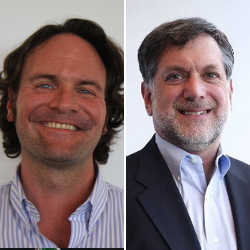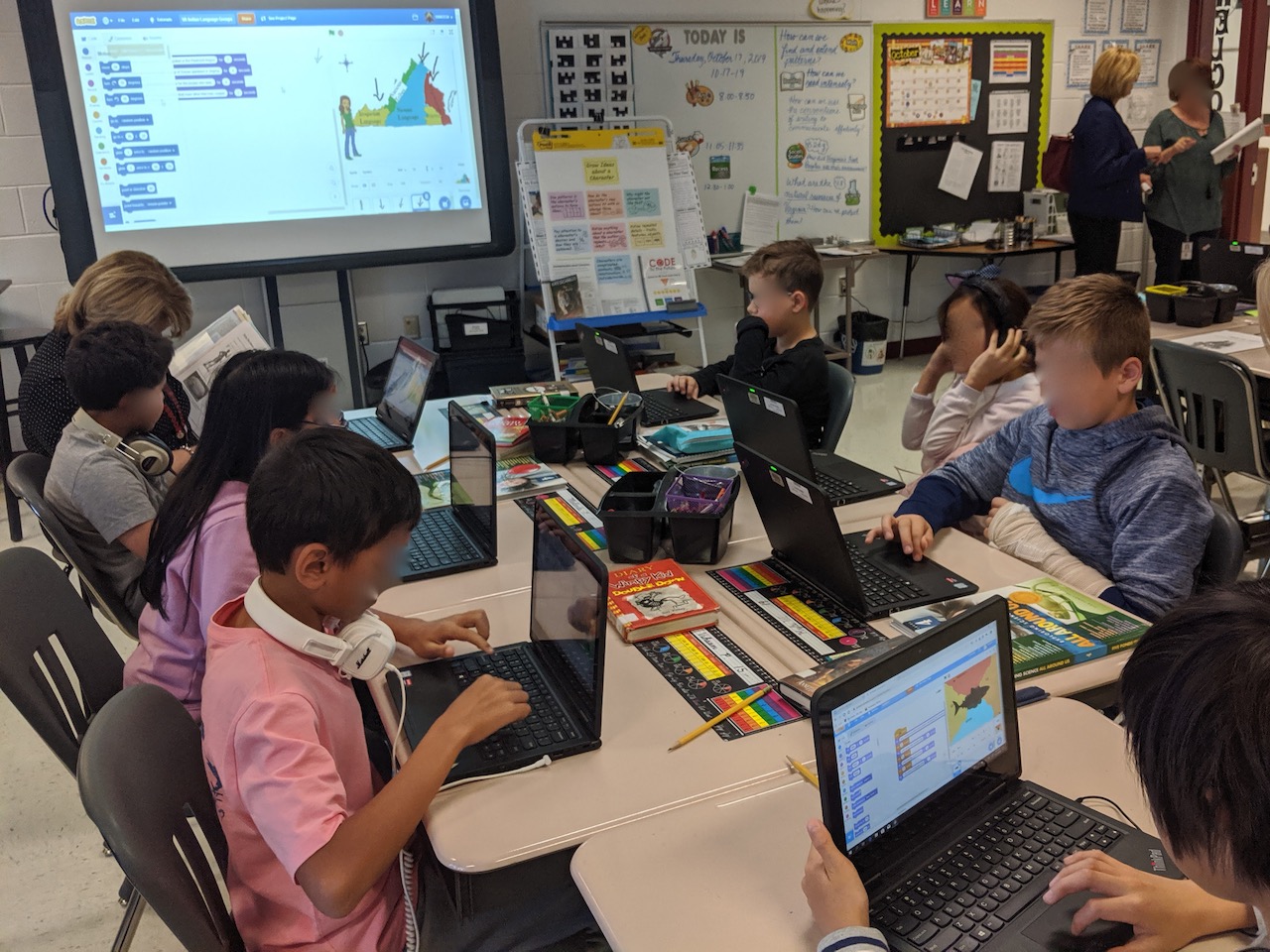
Now, more than ever, there is a pressing challenge to transform computer science education to invite, support and enable success among Black, Latinx, rural, and low-income populations. This challenge is the subject of several recent blog posts, including Mark Guzdial’s call for CS educators to deliberately consider race in the courses they teach, Tiffani Williams’ examination of the language we use, (and the labels it generates), and Kim Pearson’s advocacy for interdisciplinary collaboration as a means to identify and confront structural racism embedded within academic disciplines .
Through a multi-year partnership, we’ve had the opportunity to discuss Computer Science education with wide range of school districts in the League of Innovative Schools (a national network of 114 school districts). Educational change leaders remind us that endemic structural barriers can only be addressed with deep structural changes. Access to high school courses is not enough. We learned that although many of the high schools in the League now have AP Computer Science, Exploring Computer Science and other high school offerings, the students who take these courses are not representative of overall school demographics. Students who take these high school electives are disproportionately white and male. Typical structural issues discussed by educators include:
- When significant opportunities to learn CS are mostly in after-school programs (a robotics club), students are differentially able to stay for those programs.
-
When opportunity to learn depends on access to particular teachers, those teachers may not be evenly available in Title 1 (lower-income) and more affluent schools that are within the same district.
-
When only some students are encouraged to take CS as elective preparation for college or for specific careers, existing barriers may overlay with CS and discourage students from engaging with CS.
Nor is acquiring and providing particular tools or experiences enough; all schools may have the same tool or experience available, but students’ opportunity to learn computer science from it may remain quite different and quite inequitable. Robust teacher preparation and treating CS as a fundamental literacy (rather than a technical elective) are key parts of the solution. So is starting earlier with students.
Building Computational Thinking and Computer Science Pathways
For the past two years, we have been working in partnership with three unique school districts from the League to develop comprehensive K-12 computing pathways. One rural, low income district in the Southeast defined equity as attracting more girls to computing and breaking the wider perception that CS is “men’s work.” A second district on the outskirts of a major midwestern city focused their equity challenge on the instructional differences between Title 1 (a federal low-income designation) and other elementary schools in the same district. For a third district, located in a historically white midwest college town, engaging their growing Latinx and other non-white populations in computer science requires starting in elementary school and building continuously, year after year.
All three districts came to us with a mandate for real, districtwide change. These districts are different sizes, are located in different states, and have different equity challenges. Yet, they have fundamental commonalities in their approach. They all aim to create opportunities to learn CS in all grades of elementary, middle and high school, not just late in a student’s career. They plan for CS to be part of district culture and a responsibility of all teachers, not just the province of specialists. They all aim for a mix of computer science courses (or modules) as well as the integration of CS thinking into other core subjects. Over the course of 2 years of joint work and sharing, we’ve found three basic principles that are a starting point for tackling equity within the structure of a school district.
#1 Consistency of Access to CS and CT learning opportunities
Consistency matters. School leaders, teachers, and the wider community need to know that what is offered in computing at one school is likewise offered at another school, regardless of differences in race, ethnicity, and socio-economic status. This is not to say “one size fits all” but it is to say that districts have the responsibility to ensuring high quality computing curricula and instruction occurs across all of its schools and that the community supports their students to learn it. Consistency enables continuity for parents and students who often move across schools. It allows all students to participate in district-wide events. For example, if there is a districtwide “computing and art” fair for 5th graders, it is important that all students (regardless of school or setting) have opportunities to learn to use program to draw repeating patterns, whether with a robotics kit or a block-based programming language.
#2 Cumulativity of CS and CT learning opportunities
Cumulativity follows consistency. When we started with our districts, an inventory revealed that many students were repeating the same sorts of computing experiences in early elementary, late elementary and in middle school — for example, seeing the same types of robotics programming challenges over and over again. To prepare for more advanced learning, experiences need to accumulate and mature in complexity. When a district has a documented pathway, a sixth grade teacher will know what students learned earlier and can plan a more advanced next experience. Further, a well-documented common vocabulary for a computing pathway acts as the unifying “glue” year- to-year, ensuring students can bring what they learned earlier into classroom discussions of new computing concepts.
#3 Competency-based learning
Third and last, all of our districts decided to focus on competencies. The long-standing debate of what computational thinking exactly is (or isn’t) has not been particularly helpful for school districts hungry for clear and actionable next steps for ramping up their computing curricula. Further, specifying what tools or courses students will be purchased and deployed does not capture what they are learning. Students in a Title 1 and another school who both are given Scratch may be supported to learn very different competencies with the same tool. Our districts worked hard to develop well-defined “look fors.” These are observable indicators of student competencies. Look fors are essential to district’s ability to describe, monitor and improve progress towards equitable learning. In addition to “look fors,” we have been developing student exit tickets to monitor what students say they are learning in computing experiences. We review these tickets and pay close attention to the language. Do children only name the things they are given (i.e., “We did Scratch today”)? Do they use computer science vocabulary (“We debugged a loop that went on forever”)? Do they describe a competency (“We modified our computational model of plant growth to better fit what actually we observed in the school garden”)? When we see the latter more often than the former, we know we’re headed in the right direction.
Conclusion
For our nation to succeed in transforming CS to be equitable, efforts at many different levels are necessary. Most states have established standards. Many high quality courses and tools exist. The challenge now is on the district level. Here we’ve highlighted the need to support districts in tackling the structure of their CS pathways (or lack thereof) by starting with the question of equity — and not just focusing on a singular course, a specialist teacher, or a chosen computer tool. We advocate identifying the structure that perpetuate unfairness, which include (but are not limited to) electives, after-school experiences, and unequal access in different schools in the same district. Our three Cs (consistency, cumulativity and competency-based) describe the playing field for an equitable K-12 pathway for computer science education, but there’s still much work to do to win the game.
Jeremy Roschelle is Executive Director of Learning Sciences Research at Digital Promise and a Fellow of the International Society of the Learning Sciences. Quinn Burke is a Senior Research Scientist at Digital Promise, a nonprofit that works at the intersection of researchers, entrepreneurs, and educators; his research examines the effectiveness of different coding activities for introducing programming to new students.




Join the Discussion (0)
Become a Member or Sign In to Post a Comment